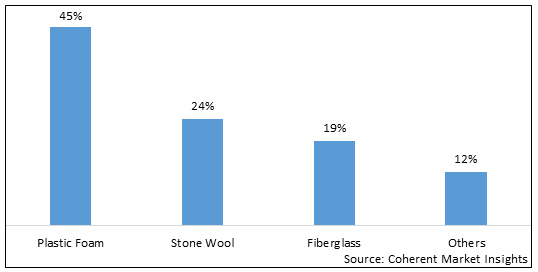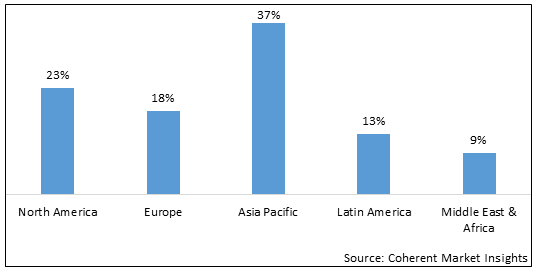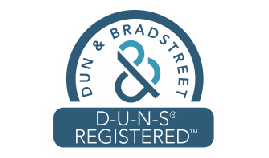Thermal Insulation Materials Market is estimated to be valued at USD 72.77 Bn in 2025 and is expected to reach USD 112.34 Bn in 2032, exhibiting a compound annual growth rate (CAGR) of 6.4% from 2025 to 2032. The advantages of thermal insulation led to a rise in demand. Energy costs are reduced, and less heat is transferred among two objects with different temperatures. Insulation is produced by thermal insulation materials that absorb, reduce, and reflect radiant heat. Because they are simpler to install and require less time and effort, companies are placing an emphasis on lightweight products such as plastic. These elements are anticipated to further fuel the market for thermal insulation material during forecast period 2025-2032.
Global Thermal Insulation Materials Market - Impact of Coronavirus (COVID-19) Pandemic
The rising demand for buildings and construction projects was the main driver of the thermal insulation market growth prior to the COVID-19 pandemic. However, the market encountered difficulties in the first quarter of 2020 as a result of business closures, a labor and raw material shortage, a decline in construction and transportation activity, and other factors. In the first few months of 2020, the COVID-19 pandemic caused an economic recession, which put low-and middle-income consumers in a difficult financial situation.
Additionally, the closure of numerous manufacturing and construction firms as a result of restrictions hampered the expansion of the thermal insulation material market. In addition, the pandemic's labor shortage was a significant issue for the thermal insulation sector. This caused the thermal insulation industry to change in favor of mechanization, automation, and off-site fabrication.
Figure 1. Global Thermal Insulation Materials Market, By Material Type, in 2025

To learn more about this report, Request sample copy
Global Thermal Insulation Materials Market: Growth Drivers
Building and construction industry growth
As the building and construction industries have expanded, so has the demand for thermal insulation for buildings. Building thermal insulation techniques reduce heat transfer between surrounding environments to maintain stable interior temperatures. Additionally, they reduce carbon emissions by needing less energy to maintain temperature and limiting heat transmission to the outer environment. It offers outstanding structural qualities, such as impact and fire resistance. Due to their excellent energy efficiency, thermal insulation materials are essential for the building and construction sector. Additionally, increasing industrialization encourages the installation of thermal insulation systems in commercial buildings to reduce energy consumption, which is projected to fuel market growth.
For instance, according to the U.S. Census Bureau and the U.S. Department of Housing and Urban Development, 1,295,000 housing constructions were constructed. In addition, construction licenses are scheduled to authorize 1,724,700 home projects in 2021. This is 17.2% (0.6%). greater than the 2020 target of 1,471,100. Building thermal insulation market development is expected to be aided by rising construction projects.
Thermal Insulation Materials Market Report Coverage
| Report Coverage | Details | ||
|---|---|---|---|
| Base Year: | 2024 | Market Size in 2025: | USD 72.77 Bn |
| Historical Data for: | 2020 To 2024 | Forecast Period: | 2025 To 2032 |
| Forecast Period 2025 to 2032 CAGR: | 6.4% | 2032 Value Projection: | USD 112.34 Bn |
| Geographies covered: |
|
||
| Segments covered: |
|
||
| Companies covered: |
Key players operating in the global thermal insulation materials market are Saint-Gobain S.A., Kingspan Group, Dow Chemicals Company, Asahi Kasei Corporation, BASF SE, Owens Corning, Bayer AG Rockwool International, E. I. du Pont de Nemours and Company, and Berkshire Hathaway. |
||
| Growth Drivers: |
|
||
| Restraints & Challenges: |
|
||
Uncover macros and micros vetted on 75+ parameters: Get instant access to report
Increasing Energy Consumption to Support Growth
Rising energy prices are being driven mostly by rising demand for building thermal insulation materials in both residential and commercial applications. Inefficient energy usage has two costs. Significant energy use may cost the consumer a lot of money due to recent price rises. It also contributes to the depletion of natural resources. As a result, consumers, particularly those who live in urban areas, make an effort to insulate their homes. Creating low-energy insulating goods such as foamed plastics represents huge commercial potential. Some of these solutions can recover insulating expenditures in as little as 12 months through energy savings.
Furthermore, according to the Indian Green Building Council, good building insulation saves money and protects the environment. It not only reduces monthly energy costs but also enhances overall comfort. Insulation maintains a suitable temperature by keeping heat loss and leaks at bay. With the implementation of green technology and practices, the potential for energy savings through design may now be as high as 40% to 50%. Building insulation is becoming increasingly essential since it may cut energy usage by up to 8%.
Figure 2. Global Thermal Insulation Materials Market, By Region, 2025

To learn more about this report, Request sample copy
Global Thermal Insulation Materials Market: Market Restraints
Faulting price and high cost of raw material
High capital cost of insulation materials is expected to hinder the demand for thermal insulation material in residential buildings, and this is projected to hamper the market growth. The use of thermal insulation material in buildings saves a significant amount of energy in the form of electricity. However, due to the high capital cost of these materials, not all the owners opt for thermal insulation material and this is restricting the market growth.
The inadequate infrastructure of distribution channels is creating challenges for manufacturers to reach the target audience is projected to hamper the market of thermal insulation material. Also, lack of awareness regarding the benefits of insulation materials is expected to restrict the adoption of these materials this, in turn, is hindering the market growth.
Global Thermal Insulation Materials Market: Market Segmentation
The market is divided into foamed plastic foam, stone wool, fiberglass, and others categories based on material.
The segment of mineral wool is further divided into glass and stone wool. The most popular material is mineral wool because of qualities such as simplicity in installation. The European Insulation Manufacturers Association (EIMA) has also granted this product its seal of approval as being both fire-resistant and appropriate for buildings. Plastic foam includes extruded polystyrene (XPS), expanded polystyrene (EPS), polyisocyanurate (PIR), polyurethane (PU), and other foamed polymers. Shale gas is anticipated to significantly lower the cost of production when used in the production of foamed plastics, leading to the segment's growth during the forecast period.
Additionally lightweight, foamed plastics are perfect for making insulating boards and other do-it-yourself products. They are frequently used for insulation in tropical and temperate regions due to their low cost and R-values suitable for equatorial and temperate climates.
Global Thermal Insulation Materials Market: Regional Analysis
Asia Pacific, with a market value of US$ 14.15 billion in 2025, is the largest and fastest-growing region in the global building thermal insulation market, largely due to the massive infrastructure development projects planned by China, India, and Southeast Asia. Additionally, it is anticipated that India and China will enact stricter regulations on energy use over the next five years, increasing the industry's revenue.
The market in North America is distinguished by significant government support for energy-saving innovations such as thermal insulation for buildings. For instance, the Environmental Protection Agency (EPA) cites rigid foam boards and sleek foils as examples of sleek foils, while fiberglass, rockwool, cellulose, and natural fibers are examples of bulky fiber materials. Convective heat flow is impeded in a building cavity by bulky materials. The company insists on using materials with higher thermal insulation values (R-value) due to sustainable considerations as well. Furthermore, it is anticipated that a high level of public awareness in the area will keep the business thriving.
The market in Europe will be dominated by the use of building thermal insulation materials in retrofitting work, which is being done in many countries to repair aging infrastructures.
Global Thermal Insulation Materials Market: Recent Developments
Global Thermal Insulation Materials Market: Key Companies
Key players operating in the global thermal insulation materials market are Saint-Gobain S.A., Kingspan Group, Dow Chemicals Company, Asahi Kasei Corporation, BASF SE, Owens Corning, Bayer AG Rockwool International, E. I. du Pont de Nemours and Company, and Berkshire Hathaway.
*Definition: Thermal insulation materials are used to restrict the flow of heat energy from two ends of different temperatures. Usually, heat flows from high temperature to low temperature. Thermal insulation material offers insulation, in which the radiative heat is reflected heat is reduced than being absorbed. Some of the common thermal insulation materials are fiberglass, stone wool, and plastic foam. These materials find application across buildings, clothing, mechanical systems, natural animal insulation, spacecraft, and automotive. Fiberglass material used for industrial applications is covered with aluminum cladding material. In the construction industry, it helps in enhancing the duration of thermal comfort without depending on mechanical air-conditioning particularly during inter-seasons periods.
Share
Share
About Author
Yash Doshi is a Senior Management Consultant. He has 12+ years of experience in conducting research and handling consulting projects across verticals in APAC, EMEA, and the Americas.
He brings strong acumen in helping chemical companies navigate complex challenges and identify growth opportunities. He has deep expertise across the chemicals value chain, including commodity, specialty and fine chemicals, plastics and polymers, and petrochemicals. Yash is a sought-after speaker at industry conferences and contributes to various publications on topics related commodity, specialty and fine chemicals, plastics and polymers, and petrochemicals.
Missing comfort of reading report in your local language? Find your preferred language :
Transform your Strategy with Exclusive Trending Reports :
Frequently Asked Questions
Select a License Type

Credibility and Certifications

860519526

9001:2015
27001:2022


Joining thousands of companies around the world committed to making the Excellent Business Solutions.
View All Our Clients